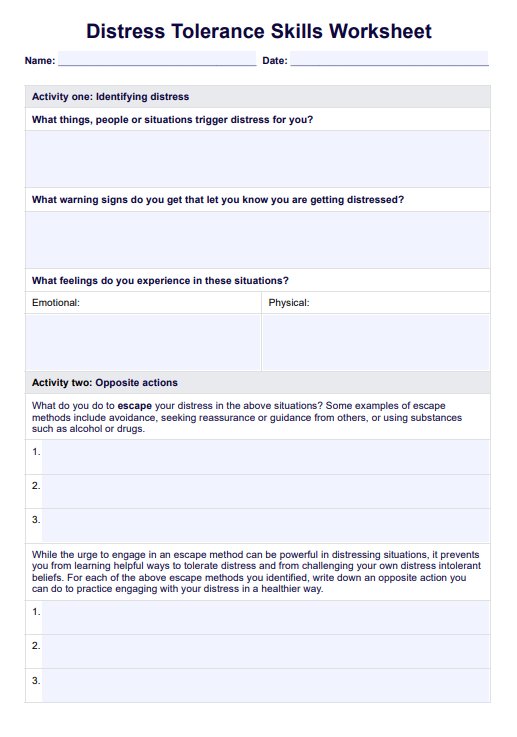This worksheet can be helpful for anyone struggling to engage with their negative emotions, or who finds it intolerable or unbearable when they are faced with distressing emotions.

Distress Tolerance Skills Worksheets
Help your clients learn to sit with their distress and build up their tolerance to distressing emotions with our Distress Tolerance Skills Worksheet.
Distress Tolerance Skills Worksheets Template
Commonly asked questions
While this worksheet includes prompts and explanations to help ensure your clients understand the purpose of each exercise, it can still take some time to work through and so it should either be completed by your client in their own time between sessions, or time should be set aside in their session specifically for working through the activities in this worksheet.
If your client is in distress at the smell of smoke coming in from under a door, that’s not the time for them to try mindfully tolerating their distress! As you can see, there are times when your client can problem-solve to alleviate their distress, but there are also times they will be distressed when there is no action to be taken to alleviate the problem. The balance between tolerating and taking action is one of the toughest problems your client will need to manage as they learn to engage with their negative emotions rather than engaging in escape behaviors. The degree to which they should accept their distress or improve their situation is mainly dictated by the degree of control your client has over the situation. Sometimes a combination of problem-solving and tolerating can be beneficial in more complex situations.
EHR and practice management software
Get started for free
*No credit card required
Free
$0/usd
Unlimited clients
Telehealth
1GB of storage
Client portal text
Automated billing and online payments











